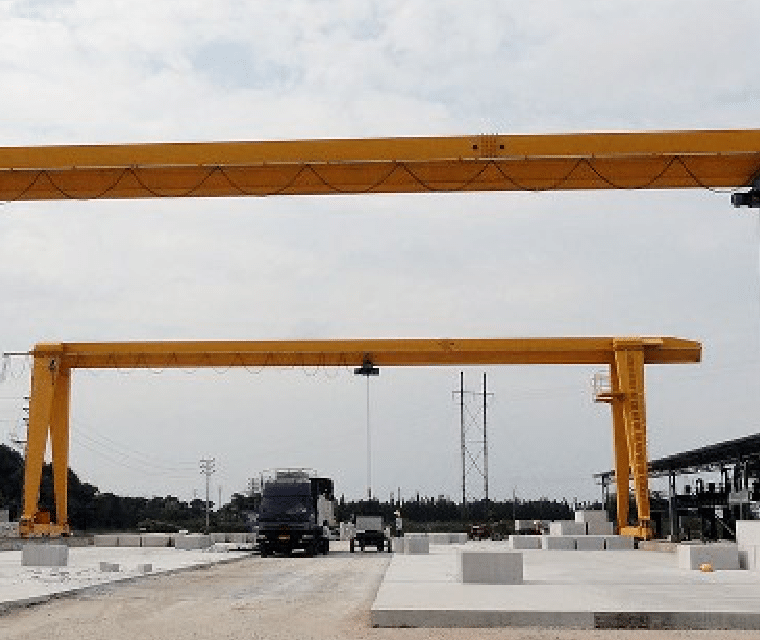In almost any factory setting, Electrical Chain Hoists can be a must-have. Ideal for providing vertical lifts, electric chain hoists are simple and simple to use. This makes them an attractive alternative for companies.

However, what is not easy may be the task of selecting the best hoist for your needs. Industry is flooded with a large number of products, most of which are subpar offerings. With all manufacturers claiming the very best spot, it may become challenging to settle on the correct one.
That is why, to make sure that you never go awry, we've gone ahead and compiled this complete help guide choosing electric chain hoists available. After you go through the guide below, you will have little difficulty understanding which product you need to purchase.
But let's begin from the outset and make things right about what an electrical Chain Hoist is.
What's an electric powered Chain Hoist?
Basically, an electric chain hoist is really a device that's useful for vertically lifting and lowering any materials. The hoist consists of an electric motor which has a brake, Gearbox, Load Chain wheel and a controller, which can be employed to control the motions in the system. The lifting element used will be the Alloy Steel Chain.
These kinds of hoists are ideal in factories and machine shops, which require fast lifting and loading of things.
Considerations when choosing Electric Chain Hoists
Deciding on the best chain hoist is amongst the essential prerequisites for the safe and efficient workshop environment. The following are many of the key factors that must definitely be noted in choosing the proper product.
The Weight in the load: This is the first and a lot important factor you'll want to consider when scouting for electric chain hoists. The load that you'll be lifting determines the hoist you will want to buy. Generally speaking of thumb, at under ten a great deal of lifting capacity, a chain hoist is preferred. However, for lifting greater weights, an electric wire hoist would work. However, this doesn't hold with high lifting height. So, according to your industry requirements and needs, a choice of hoists will change.
Application Requirement: Once you've determined the strain type, you need to discover the approval that you may be putting the hoist. Contemplate this: Can you use it for product assembly? If that's the case, then extreme precision can be a prerequisite. Equally important is to know if you're using any devices underneath the hook. Or exactly what are your duty cycles?
Lifting Speed: The following key to consider will be the lifting speed, which must be carefully calibrated for that proper loading and unloading from the materials being lifted.
The task Environment: Perhaps more essential than lift speed may be the environment where your hoist will probably be used. Factory environments can be abrasive for machinery, and it's vital to see the impact that this workplace will have in your equipment. For instance, when the hoist is used in extremely high-temperature environments, this might cause gearbox leakage and related hoist malfunctions. Similarly, shallow temperatures may cause cracks to build up or internal components to freeze. Setting where there are extreme temperature swings can also be detrimental to the operation of one's hoist. Frequent temperature changes can lead to electrical short circuits and associated equipment malfunction.
The work Cycle: What this means is the time which is why your hoist will probably be used. The volume of hours that this hoist will operate at a stretch could affect the longevity of the machine. The size of the job cycle is essential as electrical hoists should dissipate heat from the motors. Therefore they ought to be given sufficient downtime to chill and recover. Otherwise, you might you need to be inviting equipment malfunctions.
The peak With the Lift: The height to which you'll want to lift the stress also plays a significant part in the range of the hoist. Usually, electric chain hoists use a container where the excess chain is spooled. Naturally, the higher the height, the more time the chain, and also this means a greater chain container. Or even designed properly, a too-large container could actually work as a blockage on the load being lifted. An Electric Chain hoist can be a preferred decision for higher lifting height, e.g. windmill hoist for turbine maintenance.
The energy Source: The type of hoist you're looking for will also determine the sort of power source you will want to use. For low-duty cycle applications, a single-phase hoist is sufficient. If, however, you will need extremely high-duty cycles, then its greatest coupe a three-phase hoist. This can ensure that you plenty of power for that machine's operation.
Warranty: As much as machines go, a power hoist is probably the ones that undergo the standard deterioration. Hence, to avoid repairs, you need to get a merchandise that has attractive warranty features. Make certain that the hoist warranty covers all essential parts and labour. Usually, labour will cost you more than parts, therefore it is best if your warranty comes with both included.
Safety measures: At the end of the afternoon, an electrical hoist is often a machine. Plus any setting where electrical devices are being utilized, accidents can occur. That is why, when choosing the hoist, make certain it's got all safety features, like load limiters. Equally important are self-adjusting brakes and thermal overload protection.
For more details about Electric Wire Rope Hoist check this useful site
